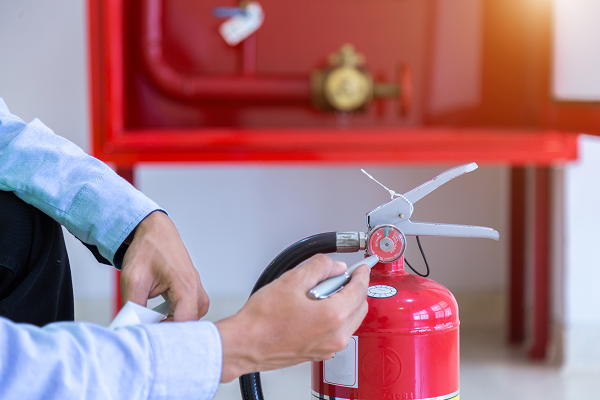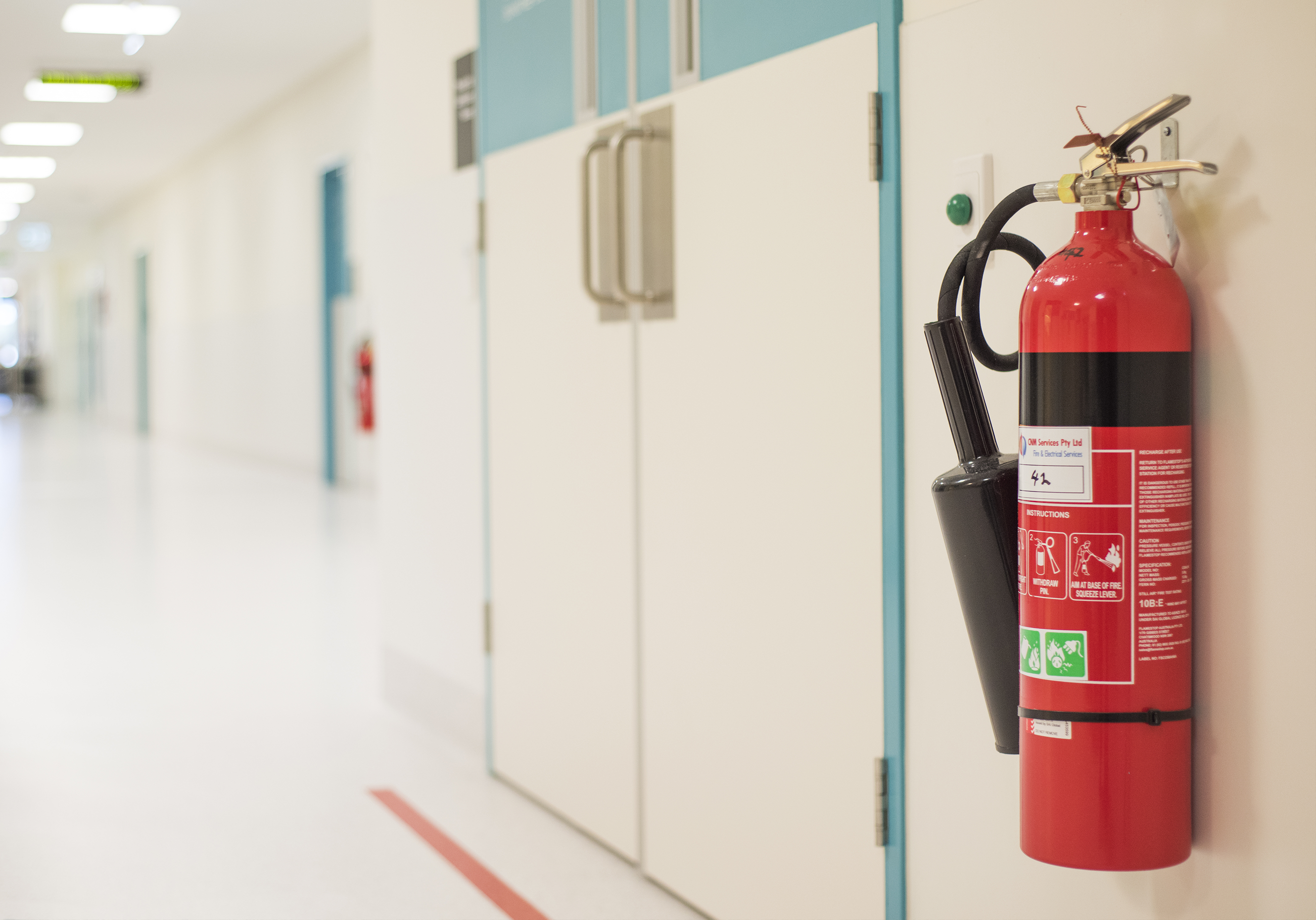Part I of the If Fire Strikes, Make Every Second Count series.
When a fire ignites, putting it out is all about speed. The faster you or a firefighter douse the flames with water or an extinguisher, the better. If anything slows down the response, the fire burns longer, causes more damage, and poses a greater threat to human life.
The good news: you can take simple steps at your office and home to accelerate your — and firefighters’ — response. Spend a little time preparing now to save time, distress, and potentially even lives if a fire starts.
Before we talk about preparing your office, we want to remind you that if a fire does start, always call 911 immediately. Then decide if it’s safe to try to put the fire out yourself or if it’s best to evacuate the area.
 Regularly checking fire extinguishers is essential to office safety
Regularly checking fire extinguishers is essential to office safety
Related:
Underwriting Property: A Guide to Fire, Wildfire, and Earthquake Risk
Office prefire planning
Not every business is required by regulation to have a prefire plan, but every business needs one. A prefire plan improves safety for you, your customers, and your employees.
A prefire plan starts with locating all smoke detectors, exits — emergency and otherwise — manual pull alarms, fire extinguishers, sprinkler valves, and hazardous materials. Record these locations on a map and post it where it’s easily seen, such as near the main exit.
Next comes thinking about anything that could slow an evacuation. Here are key questions to ask yourself:
- Who is in your office on a regular basis?1 Do you have customers coming and going every day? Do you hire temporary employees, perhaps for seasonal internships or especially busy periods?
- What special situations might arise? Do any of your customers or employees need assistance moving quickly? They may be elderly, have an injury, use wheelchairs or have a visual impairment.
- What physical obstacles lie on your evacuation path? Are there narrow alleyways? Are driveways constantly blocked by delivery trucks? Fences or gates? Pathways where you or other businesses store excess items?
Once you’ve identified all potential hindrances to safe evacuation, it’s time to develop procedures accounting for them. A few ways to do that:
- People who aren’t in your office regularly won’t be familiar with emergency evacuation procedures. Train your regular employees to lead everyone to safety if a fire strikes.
- If your office is in a multi-story building, train employees to help people who need assistance evacuating. According to the Seattle Fire Department, “anyone unable to negotiate exit stairs should enter the stairwell with one or two assistants, securely close the door and wait on the landing for the fire department.
- To deal with physical obstacles, you have two options: change the evacuation route or clear the pathway. For example, you could work with other businesses to remove items blocking your route to safety.
- Conduct regular fire drills and use them as an opportunity to not only practice your evacuation plan but also refine it. When walking your evacuation route, you may notice new obstacles. Perhaps a business has begun storing boxes outside an emergency exit. Alleyway traffic patterns may have changed. Tracking these details and revising your plan to accommodate them accelerates your response if a fire starts.
- Train employees to use the fire extinguishers in your office. If you ever need to use one, there’s no time to read the directions. Knowing beforehand how to effectively use a fire extinguisher will cut down on the amount of time the fire has to grow.
If you have questions about creating or executing a prefire plan, contact your local fire department. The firefighters can offer tips for improving your plan. If you’re required to file a prefire plan for your business, the fire department can also explain how it will use your plan.
Planning and training are just the beginning
A prefire plan is one important part of accelerating fire response, but it’s not the only part. Properly maintaining your office space and equipment is also essential. Here are several ways to do so.
- Keep entrances and exits clear. It’s surprisingly common for people to stack boxes or other items in front of an exit. Doing so seems harmless, but if there’s a fire, firefighters can’t enter quickly, and you, your customers, and employees can’t exit easily.
- Keep areas under automatic sprinkler heads clear. Again, it seems harmless to stack items in a corner or on a shelf, but when those items are close to a sprinkler head, the sprinkler won’t work effectively. First, the stacked items could cause the sprinkler’s temperature sensor to read the nearby area as cooler than it is. The fire then has more time to grow before the sensor is triggered and the sprinkler is activated. Second, once the sprinkler does start, it will spray water on the stack of items, doing nothing to fight the flames.
- Regularly check your fire extinguishers. At least once a month, check the pressure gauge. Be sure the arrow is in the green zone. If it isn’t, the extinguisher won’t work when you need it to. To restore the necessary pressure, have the extinguisher serviced.
- Maintain extinguishers properly. All fire extinguishers in your office should be serviced by a licensed professional once a year and have more extensive service every several years or if they’re used. If you have questions about your fire extinguisher’s maintenance schedule, contact your building maintenance department or a local fire extinguisher maintenance company.
[1] Seattle Fire Department,
https://www.seattle.gov/Documents/Departments/Fire/Safety/WorkplaceEmergencyPlanEvacuation.pdf











